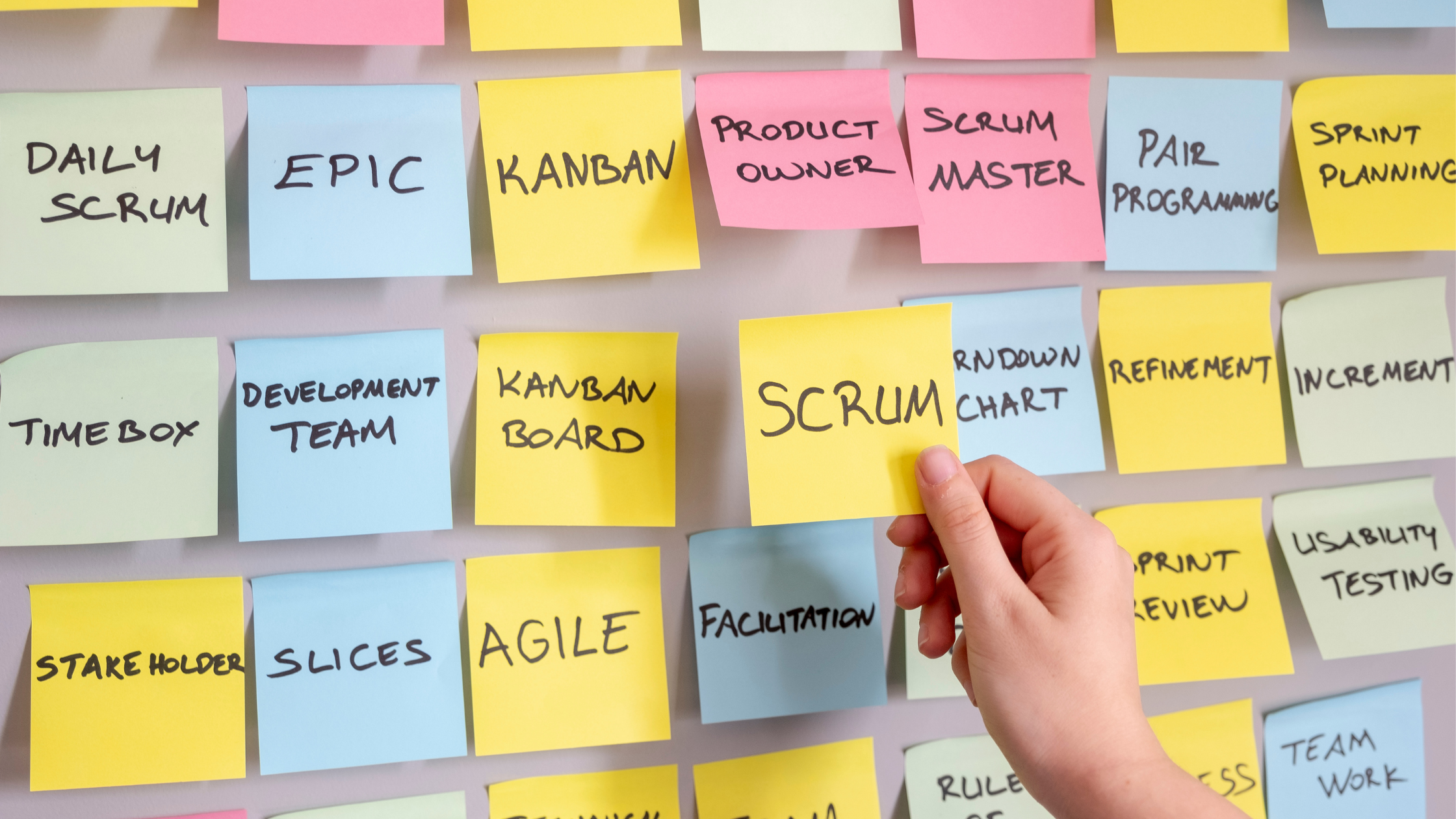What is the Scrum methodology?
Scrum is an Agile framework for managing and completing complex projects. It provides a flexible and iterative approach for delivering high-quality products that meet the needs and expectations of stakeholders.
The Scrum methodology is based on the following core principles:
- Empirical Process Control: Scrum is based on an iterative, incremental approach to product development, which allows for continuous improvement and adaptation.
- Self-Organizing Teams: Scrum teams are self-organizing, cross-functional groups that are responsible for defining, building, and delivering product increments.
- Transparency: Scrum requires complete transparency in all aspects of the process, including open communication, access to information, and visible progress.
- Inspection: Scrum involves regular inspection and adaptation of the process and product, to ensure that they are aligned with the needs and expectations of stakeholders.
The Scrum methodology is implemented through a set of defined roles, events, and artifacts, including:
- Roles: Scrum has three defined roles: the Product Owner, who represents the stakeholders and prioritizes the work; the Scrum Master, who is responsible for facilitating the process and ensuring that the team is following the Scrum framework; and the Development Team, who are responsible for delivering the product.
- Events: Scrum has four defined events: Sprint, Sprint Planning, Daily Scrum, and Sprint Review.
- Artifacts: Scrum has three defined artifacts: Product Backlog, Sprint Backlog, and Increment.
By following the Scrum methodology, teams can achieve a high level of collaboration, flexibility, and adaptability, allowing them to deliver high-quality products that meet the needs of stakeholders.
7 key elements of the Scrum methodology
- Product Backlog: The product backlog is a prioritized list of all the work that needs to be done to deliver the final product. The product owner is responsible for maintaining the backlog and ensuring that it reflects the goals and priorities of the stakeholders.
- Sprint: A sprint is a time-boxed period, typically 2-4 weeks long, during which the team works to deliver a complete and usable product increment. The sprint starts with a sprint planning meeting, where the team decides what work to do, and ends with a sprint review and sprint retrospective meeting, where the team reflects on what was accomplished and what can be improved.
- Scrum Artifacts: There are three main artifacts in Scrum: the product backlog, the sprint backlog, and the increment. The product backlog is a list of all the work that needs to be done, the sprint backlog is a list of work that the team has committed to completing during the sprint, and the increment is the sum of all the product backlog items that have been completed and integrated into the product.
- Scrum Roles: There are three main roles in Scrum: the product owner, the scrum master, and the development team. The product owner is responsible for prioritizing the work and ensuring that the team is working on the most important items, the scrum master is responsible for facilitating the Scrum process and removing any obstacles that the team may face, and the development team is responsible for delivering the product increment and following the Scrum practices.
- Daily Scrum: The daily scrum is a daily stand-up meeting where the team members share what they have done since the last meeting, what they plan to do next, and any obstacles they have encountered. The daily scrum helps the team stay focused and aligned, and it also helps the scrum master identify any obstacles that may be blocking the team's progress.
- Sprint Review: The sprint review is a meeting that takes place at the end of each sprint, where the team demonstrates what was accomplished during the sprint and gets feedback from the stakeholders. The sprint review helps the team communicate their progress, and it also helps the stakeholders understand what has been delivered and what still needs to be done.
- Sprint Retrospective: The sprint retrospective is a meeting that takes place at the end of each sprint, where the team reflects on what went well during the sprint and what can be improved. The sprint retrospective is an opportunity for the team to learn and grow, and it also helps the team continuously improve the way they work.
These are some of the key elements of the Scrum methodology, but there are many other practices and rules that are part of the framework.
The goal of Scrum is to help teams work together effectively and deliver high-quality products in a fast and efficient manner.






